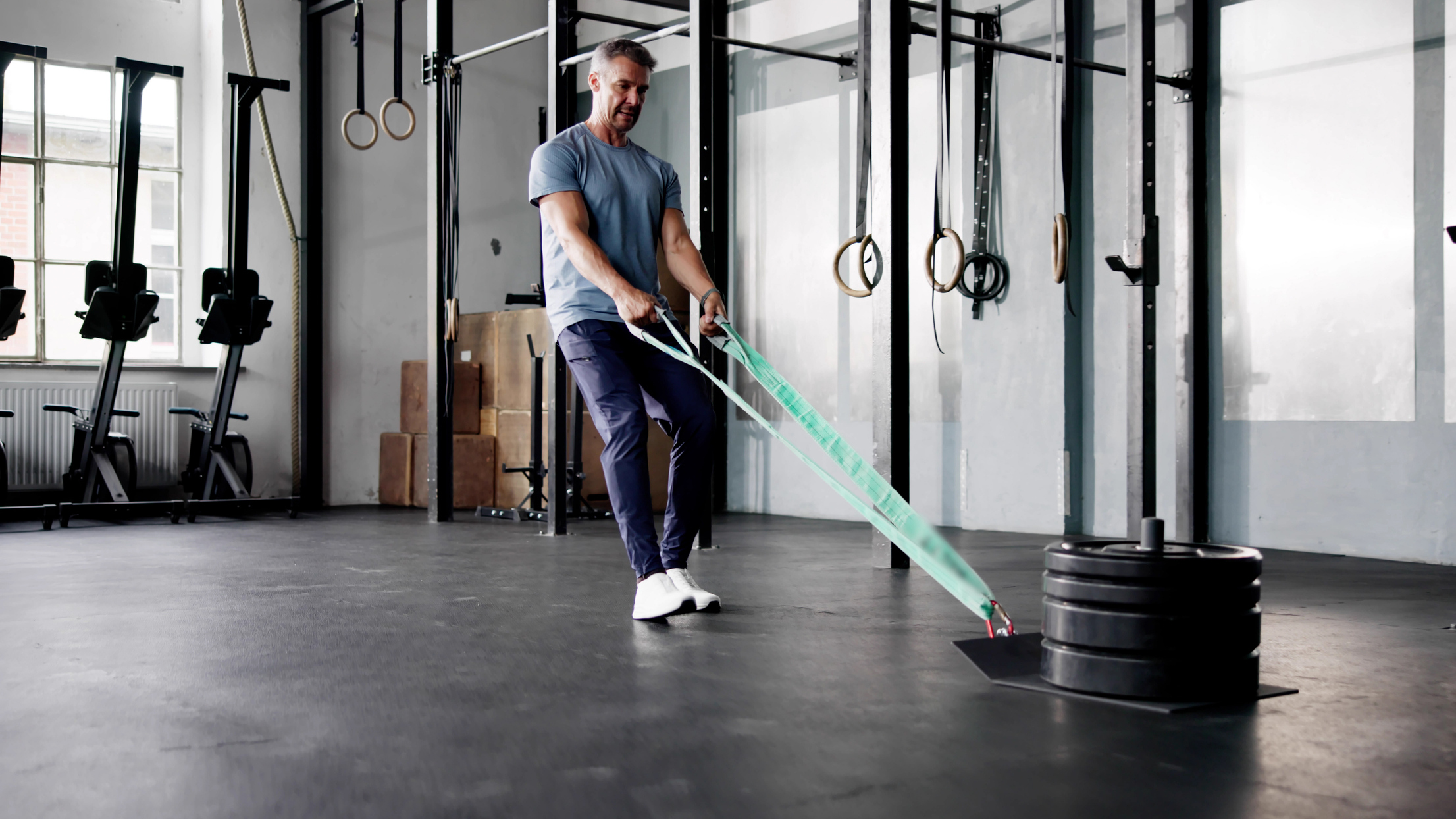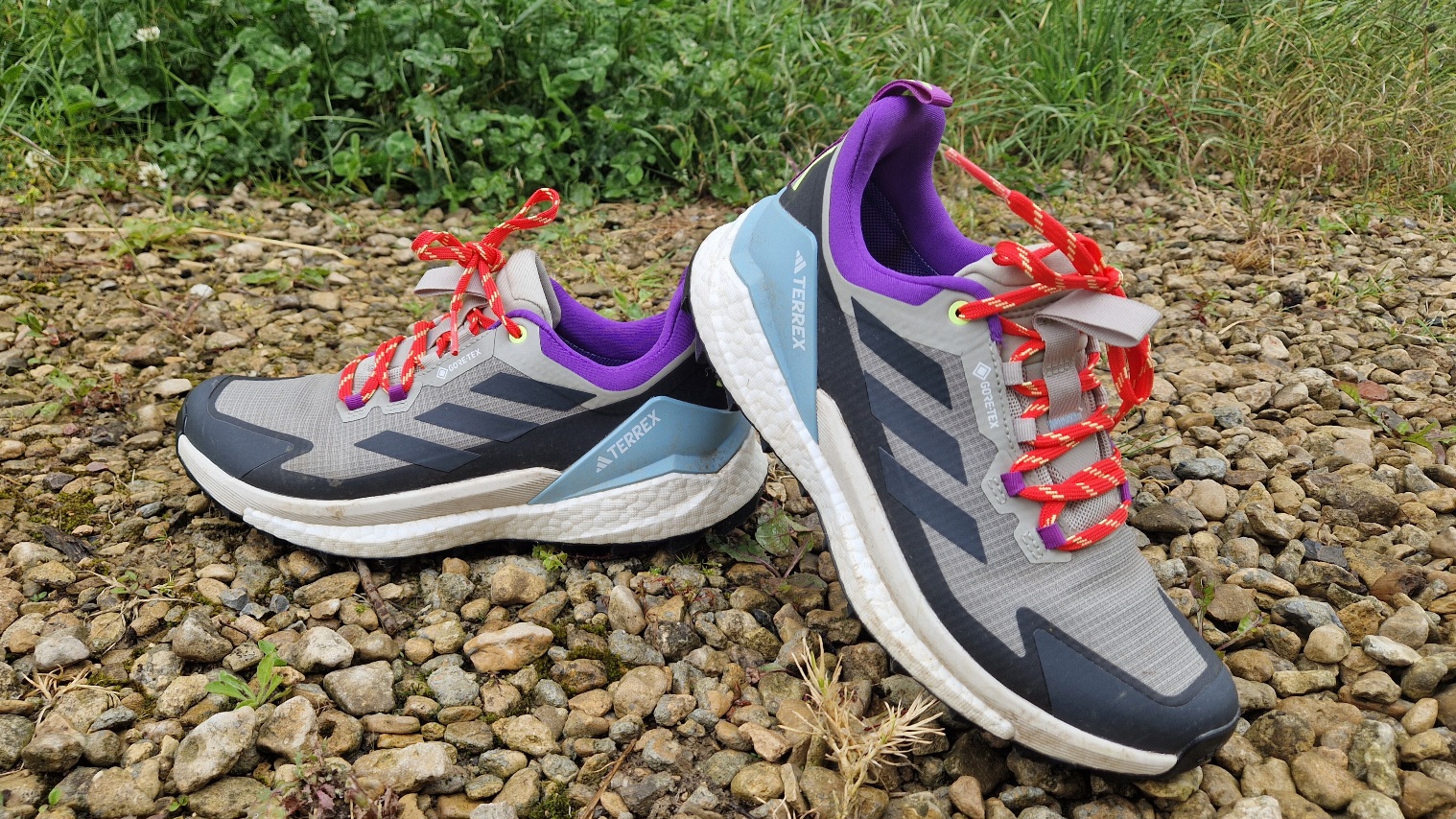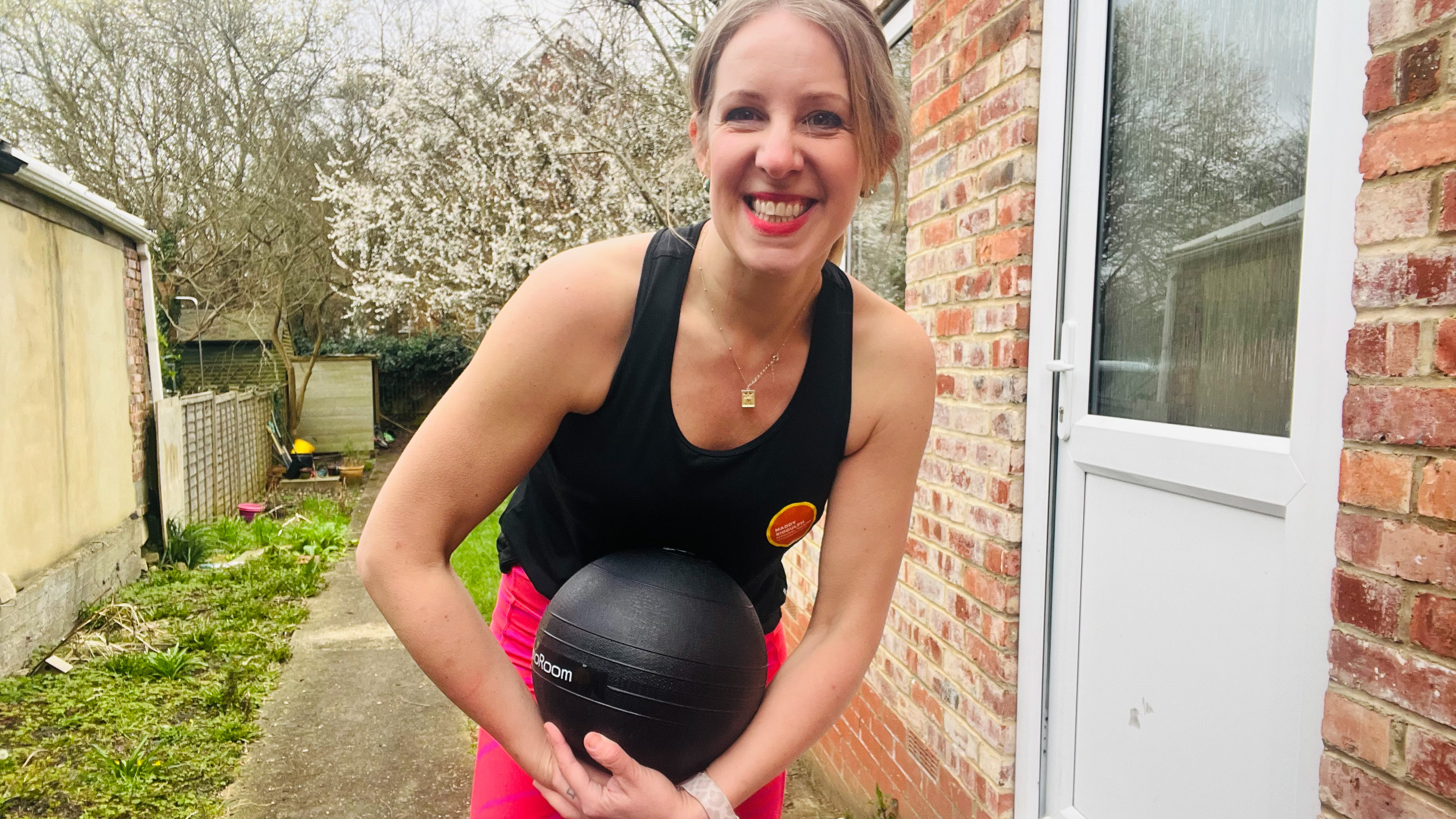Walking backward can help build strong, healthy knees according to the experts—here's how to do it
A physio and osteopath explain how and why you should incorporate loaded backward walking into your workouts

Every now and then a fitness trend emerges that tries to reinvent the wheel. Most fade out of view, but one that I've seen increasingly take hold across Instagram, TikTok and Co. is walking backward. Often on a treadmill. Occasionally dragging a heavy sled across the gym floor.
The trend can be traced back to trainer and online coach Ben Patrick, aka Knees Over Toes Guy, and his wife Alissa Schneider Patrick, aka (you've guessed it) Knees Over Toes Girl, who have been promoting somewhat unconventional training methods to boost lower-body strength and mobility, while reducing joint pain.
Recently they shared a post asking the simple question "Have you walked backward?" accompanying a short clip of Alissa walking backward on a non-motorized treadmill (meaning she was generating the power rather than the conveyor turning over automatically).
A post shared by ALISSA SCHNEIDER PATRICK (@kneesovertoesgirl)
A photo posted by on
The Patricks include five minutes of backward walking as part of their daily regimen, claiming it works wonders to prime ankles, knees and hips, while firing up the calves, hamstrings, quadriceps and glutes.
So could backward walking be the miracle remedy for creaking joints and the solution for healthy knees? And how can you adopt this technique at home or in your gym with a regular treadmill or sled? I put these questions to a leading physiotherapist and osteopath.
Is there any benefit to walking backward?
Retro-walking, as it's known in academic circles, is having something of a second wind and in physiotherapy backward walking is often used to relieve back pain and treat arthritis because it places less strain on the joints than when performing static exercises or moving forward. It's especially effective for keeping your knees healthy, says sports osteopath Craig Carroll from London's Technique Health and Fitness.
"Low-impact exercises [such as backward walking or sled drags] are excellent for restoring knee mobility, especially in ACL rehab where regaining knee extension is crucial," Carroll tells me. "Additionally, it activates key stabilizing muscles like the quadriceps, which support the knee and aid in restoring functional stability."
Get the Fit&Well Newsletter
Start your week with achievable workout ideas, health tips and wellbeing advice in your inbox.
Backward walking also develops the "eccentric strength" of the quads, which "has been strongly correlated with a reduction in knee pain for a number of specific pathologies such as knee osteoarthritis and patellofemoral joint pain," says Carroll's colleague, chartered physiotherapist Matthew Freaney.
One small Dutch study suggests walking backward can even improve cognitive abilities. Participants demonstrated the fastest reaction times when stepping backward, as opposed to forward or sideways, possibly because their brains were already used to performing an "incongruous task".
As always, it's important to remind you of the limitations of any one exercise and, as Freaney says, that you should always err on the side of caution before trying them yourself.
"Rarely is the solution to pain or discomfort as simple as doing one exercise," he says. "So please don't be disheartened if your 10-year history of knee pain hasn't resolved after walking backward for a week."
While exercise prescription plays a role in managing knee pain, it is only one piece of the puzzle. "An increased BMI [Body Mass Index], for example, can worsen the experience of knee pain by increasing the mechanical stress it places on weight-bearing joints while also causing inflammatory processes due to increased fatty tissue," says Freaney.
Sedentary behavior, poor pain management, biomechanical variances or high stress levels can also compound the issue. "If you want to give your knees the best chance of being happy and healthy, you need to look at the bigger picture. That’s where seeing an osteopath or physiotherapist can help—a learned friend to guide you on your way."
Carroll adds that while backward treadmill walking is highly effective, it should be combined with other exercises as part of a comprehensive plan. "A proper diagnosis and structured rehabilitation program guided by a healthcare professional is essential for optimal recovery."
Backward walking variations for healthy knees
Treadmill backward walking
As the Patricks suggest, five minutes of backward walking serves as an effective lower body warm-up. "It's an excellent way to activate the quads, which will enhance knee stability and reduce stress on the joint," says Carroll.
It will also fire up the glutes, hamstrings, calf complex and core muscles. "Walking backward on a treadmill without resistance has also been shown to burn slightly more calories than walking forward at the same speed," says Freaney.
The gold standard is to use a non-motorized treadmill, as demonstrated in the Knees Over Toes video (and the Patricks sell a non-motorized treadmill through their ATG shop). If this isn't available, set a standard treadmill to a very slow pace and build up gradually. A 1% incline will replicate the feeling of walking backward outside.
Lightweight sled drag
If you are looking to build strength Freaney suggests switching to sled drags. "There needs to be sufficient resistance to make the exercise feel challenging. A nice starting point might be 3-5 sets of 10 meters, using a resistance band connected to a sled."
Heavy sled drag
For a greater challenge, you can attach the handles of a suspension trainer to the sled, load it up, then sink into a position similar to a seated wall squat as you step back, which will place greater emphasis on your glutes and quads.
Towel sled drag
If your gym isn't so well equipped, you can also try placing a couple of weight plates on a towel, grip each corner and drag your makeshift sled with you. Best to ask permission from the gym and/or towel owner first.

Sam Rider is an experienced freelance journalist, specialising in health, fitness and wellness. He is also a REPS level 3 qualified personal trainer.
-
 This might be your last chance to get my favorite waterproof walking shoe, and it's 25% off
This might be your last chance to get my favorite waterproof walking shoe, and it's 25% offDeal These Adidas Gore-Tex shoes are the most watertight I've tested
By Lou Mudge
-
 I tried wall balls for 30 days and the results surprised me
I tried wall balls for 30 days and the results surprised meTry this fitness challenge to boost total body strength
By Maddy Biddulph